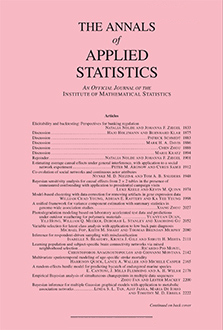Abstract
Understanding the effects of social determinants of health on health outcomes requires data on characteristics of the neighborhoods in which subjects live. However, estimates of these characteristics are often aggregated over space and time in a fashion that diminishes their utility. Take, for example, estimates from the American Community Survey (ACS), a multiyear nationwide survey administered by the U.S. Census Bureau: estimates for small municipal areas are aggregated over 5-year periods, whereas 1-year estimates are only available for municipal areas with populations >65,000. Researchers may wish to use ACS estimates in studies of population health to characterize neighborhood-level exposures. However, 5-year estimates may not properly characterize temporal changes or align temporally with other data in the study, while the coarse spatial resolution of the 1-year estimates diminishes their utility in characterizing neighborhood exposure. To circumvent this issue, in this paper we propose a modeling framework to disaggregate estimates of proportions derived from sampling surveys, which explicitly accounts for the survey design effect. We illustrate the utility of our model by applying it to the ACS data, generating estimates of poverty for the state of Michigan at fine spatiotemporal resolution.
Citation
Marco H. Benedetti. Veronica J. Berrocal. Roderick J. Little. "Accounting for survey design in Bayesian disaggregation of survey-based areal estimates of proportions: An application to the American Community Survey." Ann. Appl. Stat. 16 (4) 2201 - 2230, December 2022. https://doi.org/10.1214/21-AOAS1585
Information





